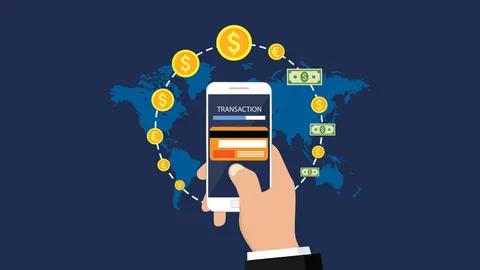
Crypto Payment: A Game-Changer in Financial Transactions
Table of Contents
How Crypto Payments Work
Crypto payments operate within a decentralized framework, fundamentally altering the conventional payment landscape. This process involves several key steps and intricate mechanisms, making it essential to delve into the intricacies of the system.
1. Digital Wallets
The foundation of crypto payments lies in digital wallets, where individuals store their cryptocurrencies securely. These wallets are equipped with private keys, serving as digital signatures for transaction authorization.
2. Transaction Initiation
When a user initiates a crypto payment, they broadcast the transaction details to the network. This includes the recipient’s wallet address, the amount, and sometimes, a transaction fee for network prioritization.
3. Verification through Blockchain
The heart of crypto payments is the blockchain, a distributed ledger technology. Transactions are grouped into blocks, which are then validated through a consensus mechanism. Once verified, the transaction is added to a block.
4. Confirmations
To ensure the security of the transaction, it goes through a series of confirmations. The more confirmations a transaction receives, the more secure it becomes, reducing the risk of double-spending.
5. Receipt of Funds
Once the recipient’s wallet acknowledges the transaction, the crypto payment is complete. This entire process typically takes minutes, offering a swift and efficient means of transferring value.
Types of Crypto Payment Methods
Crypto payments have evolved beyond traditional transactions, offering a diverse range of methods to suit various needs. Here, we explore some of the key crypto payment methods that have gained prominence:
1. Peer-to-Peer (P2P) Transactions
P2P crypto payments involve direct transfers between individuals or entities without the need for intermediaries. This method offers unparalleled privacy and control over one’s digital assets, popularized by cryptocurrencies like Bitcoin.
2. Cryptocurrency Wallets
Crypto payment often begins with cryptocurrency wallets, software or hardware solutions that store digital assets. Wallets vary from hot wallets (connected to the internet) to cold wallets (offline for enhanced security).
3. Cryptocurrency Debit Cards
Several fintech companies now offer crypto debit cards, allowing users to spend their cryptocurrencies at traditional merchants that accept debit card payments. These cards convert crypto holdings into fiat currency at the point of sale.
4. Payment Gateways
Businesses can integrate crypto payment gateways into their e-commerce platforms, enabling customers to pay with cryptocurrencies. These gateways facilitate real-time conversion of crypto to fiat for merchants, reducing volatility risks.
5. Smart Contracts
Smart contracts on blockchain platforms like Ethereum enable automated, self-executing crypto payments when predefined conditions are met. They find application in various sectors, including supply chain management and decentralized finance (DeFi).
6. Cross-Chain Swaps
With the rise of blockchain interoperability, users can perform cross-chain swaps or atomic swaps, directly exchanging cryptocurrencies from different blockchains without relying on intermediaries.
7. Stablecoins
Stablecoins, such as USDC or USDT, offer crypto payments with minimal price volatility, as they are pegged to traditional fiat currencies like the US dollar. This stability makes them ideal for everyday transactions.
In conclusion, the world of crypto payments is vast and dynamic, offering a multitude of methods catering to both individuals and businesses, each with its unique features and advantages.
Adoption and Acceptance of Crypto Payments
The world of crypto payments is experiencing a significant shift as adoption and acceptance continue to grow. From individuals to businesses and even governments, a diverse range of entities are embracing cryptocurrencies as a means of exchange and investment.
1. Retailers and E-commerce
An increasing number of retailers and e-commerce platforms now accept crypto payments. Giants like Overstock and Shopify allow customers to pay with cryptocurrencies, broadening the scope for digital asset utilization in everyday shopping.
2. Financial Institutions
Traditional financial institutions, once skeptical, are now exploring crypto payment solutions. Major banks and payment processors are developing infrastructure to integrate cryptocurrencies into their services, acknowledging the potential for cost savings and efficiency gains.
3. Governments and Regulations
Governments are navigating the regulatory landscape of crypto payments. Some nations are crafting supportive regulations, while others are more cautious. Central banks are even exploring the concept of central bank digital currencies (CBDCs) as a form of crypto payment.
4. Investment and Asset Management
Cryptocurrencies have become a legitimate asset class for investors. Institutions and individuals are allocating a portion of their portfolios to cryptocurrencies, recognizing their potential for diversification and substantial returns.
5. Cross-Border Transactions
Crypto payments offer a compelling solution for cross-border transactions, circumventing the traditional banking system’s delays and fees. Remittances and international trade are benefiting from the speed and cost-effectiveness of cryptocurrency transfers.
6. Emerging Use Cases
Beyond traditional payment methods, cryptocurrencies are fueling innovative use cases. Non-fungible tokens (NFTs), decentralized finance (DeFi), and blockchain-based gaming are just a few examples of the expanding crypto ecosystem.
7. Challenges and Opportunities
While crypto payment adoption is on the rise, challenges such as scalability, security, and regulatory uncertainty persist. Nonetheless, these challenges also present opportunities for further innovation and refinement of the crypto payment ecosystem.
Challenges and Concerns in Crypto Payments
While crypto payments hold immense promise, they are not without their share of challenges and concerns that warrant careful consideration.
1. Regulatory Uncertainty
The regulatory landscape for crypto payments remains fragmented and uncertain in many regions. Governments grapple with how to classify and regulate cryptocurrencies, which can lead to legal ambiguities and compliance challenges for businesses and users.
2. Security Risks
Cybersecurity threats are a constant concern in the crypto payment space. Hacks, scams, and phishing attacks target both individuals and exchanges, highlighting the need for robust security measures to protect digital assets.
3. Price Volatility
The inherent price volatility of cryptocurrencies can pose challenges for both consumers and merchants. Rapid fluctuations in value may deter users from using cryptocurrencies for everyday transactions, and merchants may face currency risk when accepting them.
4. Scalability Issues
Popular blockchain networks, like Bitcoin and Ethereum, face scalability challenges. High transaction fees and network congestion can hinder the efficiency and affordability of crypto payments during peak usage periods.
5. Lack of Consumer Education
Many individuals remain unfamiliar with cryptocurrencies and how crypto payments work. A lack of education can lead to misunderstandings, security vulnerabilities, and reluctance to adopt this new form of payment.
6. Irreversible Transactions
Crypto payments are often irreversible. Once a transaction is confirmed, it cannot be undone. While this feature prevents chargebacks, it can be problematic in cases of accidental or fraudulent transactions.
7. Environmental Concerns
The energy consumption associated with some proof-of-work cryptocurrencies has raised environmental concerns. Critics argue that the energy-intensive mining process used by these cryptocurrencies is unsustainable.
8. Adoption Hurdles
Mass adoption of crypto payments faces hurdles, such as the need for user-friendly interfaces, improved infrastructure, and greater merchant acceptance. Overcoming these barriers is essential for mainstream adoption.
9. Legal and Tax Implications
Taxation of cryptocurrency transactions varies widely by jurisdiction and can be complex. Users and businesses must navigate tax regulations to ensure compliance.
In conclusion, the journey toward widespread adoption of crypto payments is not without obstacles. Addressing these challenges and concerns is vital to realizing the full potential of cryptocurrencies as a transformative force in the world of finance and payments.
